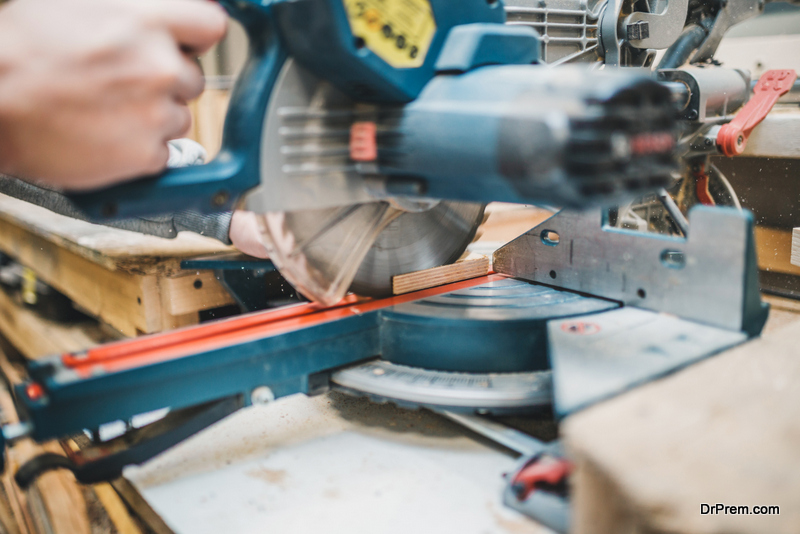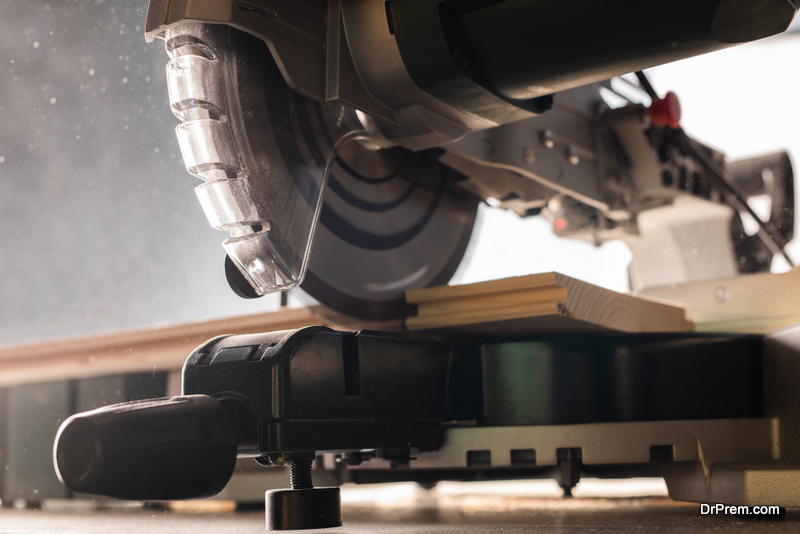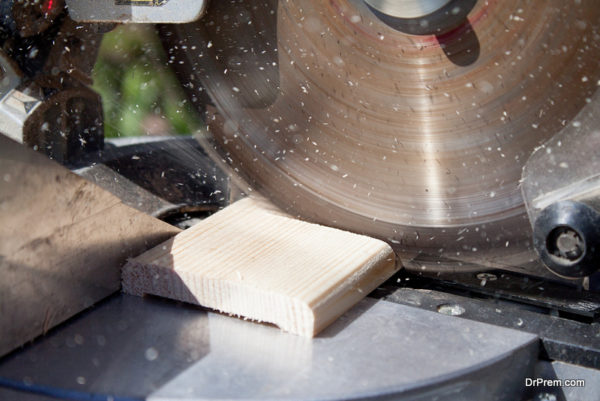When it comes to woodworking, there’s an old adage, “you say sawdust like it’s a bad thing.” It’s a mess to clean up, yes, but it would surprise some of you to know that there are some machines designed specifically to create sawdust. While definitely not one of them, a miter saw is a great woodworking tool and an equally ‘messy’ tool as it creates a lot of saw dust.
A miter saw makes cutting wood a lot easier; whether it’s straight cuts, angles or even bevels.
A sliding miter saw is a compound model of a miter saw that offers versatility and flexibility, especially when cutting thicker and wider pieces of wood. Head over to BestOfMachinery if you want to find out more about sliding miter saws
Also known as a chop saw or the mitresaw in Europe, it’s a semi-stationary tool that every aspiring woodworker wants to have. However, a debate as old as the tool itself has been going on between whether a miter is absolutely necessary or not, and is it a good investment? Table saws have less limitations, but are very costly.
Here, we shall address these questions and try to help you make a decision about the miter saw and whether you should invest in it or not.
Miter Saw – What Can It Do?

One of the quickest ways to make cross cuts and miter cuts is with the help of a miter saw. All it takes is placing your piece of wood at an angle and bringing the head down. On the other hand, you can also go with sliding your miter at an angle if it supports it, place your piece of wood down and viola; you have yourself a miter cut.
If you’re someone who likes to make picture frames or holders for your laptops, tablets, custom charging stations or other ‘square’ holders for your gadgets, a miter saw will go a long way in helping you out.
Function
The miter saw has a large blade mounted on its head – perhaps the most prominent part of the power tool – which has a spring behind it that holds it upright. There is a blade guard on the head that retracts automatically as you pull the head down.
This isn’t just useful for protecting your hand but also to ensure that the saw dust gets directed away from you. You can use this to collect the dust and use it elsewhere. It is important to keep track of your hands when using the miter saw since it is more than easy to get hurt with the miter saw. That’s why it is considered one of the most dangerous power tools out there.
The best of miter saws has a ‘miter adjuster’ that can rotate the saw head to create angles up to 45 degrees in relation to the fence. You’ll see that the adjuster snaps at commonly used angles such as 10 degrees, 12, 15, 20, 25, 30, and 45. This makes it easier to ensure that you have the right angle.
However, the accuracy mostly depends on how you calibrate the saw when you buy it. You can find instructions on how to calibrate your miter saw in the manual included in the packaging.
The on/off button is on the handle which you have to squeeze tightly to turn the saw on. This is a rather useful application since the tightness means that it also acts like a dead man’s switch. And no, this isn’t one of those alerts a website or software sends out after inactivity, but one that immediately shuts off power to the blade in case there is a lack of human operator.
The blade stops rather quickly, which means that in case of an accident, within a few milliseconds the blade is at a slow enough speed so as not to cut your hand but leave behind nothing more than a scrape or scratch. A rather deep scratch, though, so take every precaution you can before using it.
Sizes

Miter saws are measured by cut capacity and blade diameters. The cut capacity of most miter saws, even compound ones, is about a quarter of an inch less than the side of the blade. Using the wrong-sized blade on a miter is ill-advised, to say the least.
Miter saws usually come in three different sizes:
- 7 ½ inches
- 10 inches and
- 12 inches
In our experience, the 7-inch miter saws are useful only for cutting pieces of wood with a width of up to 6 or 6 ½ inches – which is not much, really. We found that these saws are much more useful for those in the plumbing business, not woodworking.
If you’re looking for a miter saw that can be a good companion for all your woodworking plans, we recommend going for the 12 or 10-inch saws. However, one of the major factors to consider when buying these blades is the cost of blades.
12-inch blades are much more expensive than 10-inch, while 7-inch are the most cost-effective options. However, as mentioned above, 7-inch won’t be of much use to you.
Is It Really Necessary?
Compound miter saws have a head that tilts so that you can use bevels easily, making crosscutting, miter cuts and bevels a lot easier. Most saws you’ll find out there are compound miter saws. However, they have one major limitation; the head size dictates how wide your cuts can be.
To cut pieces of wood longer than the blade’s diameter, you need a sliding miter saw – which is nothing short of expensive. Table saw expensive. These miter saws have a rail on which the head slides to reach farther.
While miters are safe, table saws have more utility.
At the same time, for those of you on a budget, you can make all the cuts a miter can help you make with a simple saw – even bevels! It’ll take you some time, but with a little grit and dedication you’ll get the job done and make the most out of your woodworking plan.
So, while the miter saw is a helpful and powerful tool, it isn’t an absolute necessity. However, we won’t go as far as to say that it’s a luxury either. It’s a tool that if you can afford, you should buy it – but not one that you should go out of your way to buy.
If you think we’re wrong or simply would like to share your thoughts with us, we welcome you to leave a comment below!
Article Submitted By Community Writer




